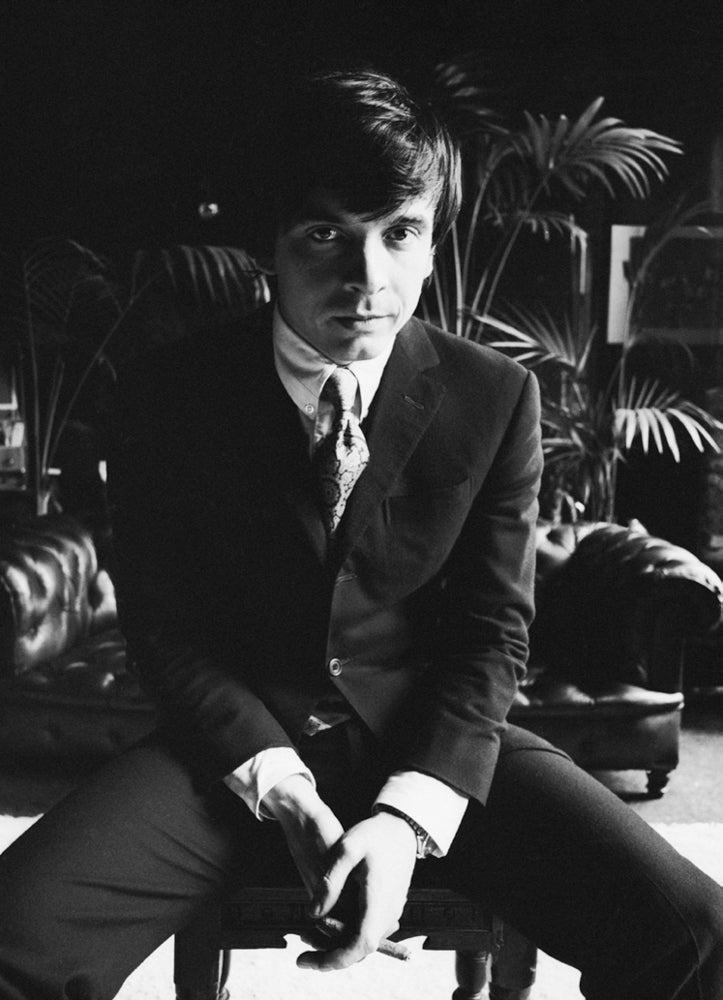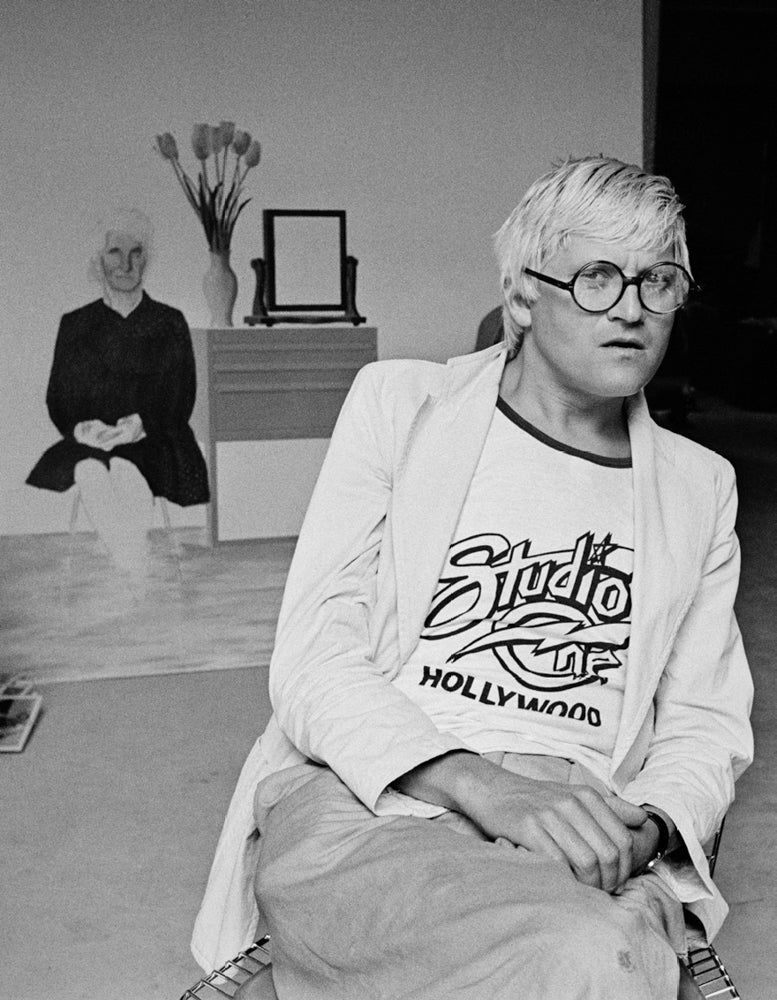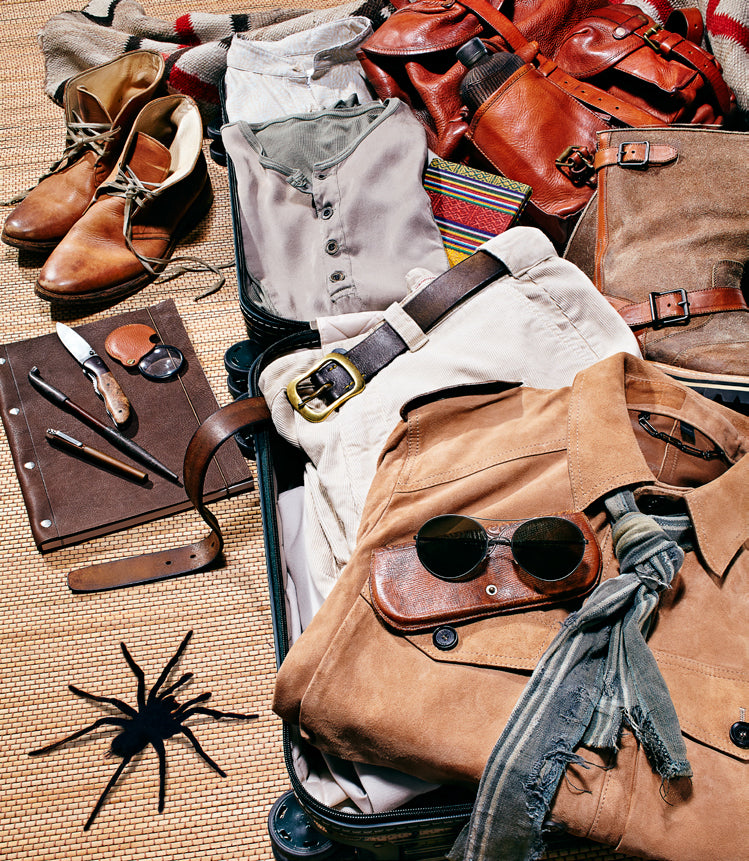
Mr. Big Shot
MR. BIG SHOT


DAVID BAILEY’S FIFTY-YEAR REIGN
A child of the Blitz, David Bailey blew open the doors of the establishment in the early ’60s when he made his name in the rarefied world of high fashion.
In doing so, he came to embody the spirit of “Swinging London,” a time when upwardly mobile working class boys fought to escape the black-and-white destinies of their “kitchen sink” backgrounds. As a rough-and-tumble lad from London’s East End, Bailey was primed to take advantage of this social shift. Handsome, charismatic, and full of raw talent, he was to photography in the ’60s what the Stones were to music. And like them, his work has endured. The 1966 film Blow-Up, directed by Michelangelo Antonioni, came out four years after he landed his first Vogue contract, and was largely inspired by his life and work. For better and for worse, it has trailed him ever since.
In a career spanning over half a century, it’s no exaggeration to say Bailey has seen and done it all. The images that adorn his studio walls are a veritable who’s who of pop-culture icons from the past sixty years. Bailey photographed Henry Cavill, the British actor and star of DC Comics’ newest epic, Batman v Superman: Dawn of Justice, for the cover of Man of the World No. 15.
After the shoot, I sat down with Bailey at his London mews house, which doubles as his photo studio, to chat about his life and career. But first, there was a doctor’s appointment on Harley Street to which he insisted I accompany him. He held my hand the entire time we were in the black cab. It’s a curious habit that, for me, demonstrates the innate warmth of the man.



By definition, the portrait photographer’s job is to capture something of the sitter that he or she may be unwilling or unable to reveal — through charm, gentle cajoling, or, when all else fails, old-fashioned bullying. Bailey is a master at drawing people out of their comfort zones. He’ll prompt, prick, and antagonize to get the result he desires. A rich vein of curiosity runs through him, and it’s easy to imagine Bailey as a young man in the East End, armed only with his Rolleiflex and a fierce desire to document the moment. Much of that young man endures.
Did you always want to be a photographer?
If I wasn’t dyslexic I would have probably gone the movie route. When I was a kid, you didn’t think too much about art. Back then, it was more about, “What are you gonna do for the rest of your life?” But you know, I’ve shot more film than most movie directors.
When did you start shooting commercials?
I started in 1966. They were black-and-white when I started. The first commercial I ever made got banned — it didn’t even get to the client. It was an ad for Cadbury
Flake with Sue Murray. She had a chocolate bar in her mouth, and the spot went on
to become their signature ad, but at the time they said there was no way they could
even show it to the client, far less put it on television. So it didn’t start too well! My
second job was for the Tame hair-spray company with the model Tanya Mallet,
and we had a trained black panther on set. This bloke, the wrangler, was making
such a fuss, going on and on about, “Don’t go near this dangerous animal!” On
the third day, I hear a terrible scream and the panther has got the wrangler in
his mouth. This commercial won all the awards in the world, and I thought to
myself, “Fucking hell, this is easy. I think I’ll stick to this.” The first one got banned
and the second one won every award in the world.

“When I was a kid, you didn’t think too much about art,” Bailey says.
What drives you to keep working?
I still paint, but I never show my paintings or sculptures. Silk screens, too — all sorts of things, really. I still do little movies, too. I’ve made four for Valentino
now. You don’t want to confuse people, though. They like to put you in your slot.
They like to think, “He’s a photographer,” “He’s an asshole,” “He’s a bookkeeper,” or
whatever. They’ve got no idea that a man might think about other things.
You’ve shot so many celebrities. Is there anybody who stands out?
Jack Nicholson is funny, still very quick-witted. He came to my last show in LA, and he just took it over. We were standing outside having a cigarette and a guy
drives up in a Lamborghini, and Jack says, “What else did you get for Christmas?”
And then some blonde girl says, “Want to come back with me, Jack?” And he says,
“No, not tonight, but keep a rain check on that.” He’s always got a comeback, Jack.
He’s super intelligent. We’re very similar. I was asked once who’s copied me the
most, and the interviewer thought I was going to say a photographer, but I told
her, “Jack Nicholson.”
Watching you work, I was struck by how curious you are.
Well, you have to be, don’t you? Because with actors, one day they’re in Lassie and the next day they’re in fucking Romeo and Juliet! You don’t know who you’re
dealing with, so you have to ask questions. If I can get Queen Elizabeth II going, I can get anybody going. Mind you, we can sue her now because she put that portrait I took on a stamp in Canada. She was great, though, the queen. Like Maggie Thatcher. Both strong women, and I love strong women.
So what’s next?
I have three books in the works, and I’m not sure I’m gonna be strong enough, but I’d like to make a movie of my childhood. It was such a surreal upbringing,
you know, just completely mad. Most of my childhood was during the war. Funny
story: We went to Weston-super-Mare in Somerset for a couple of months, and
the local lads they hated us fuckin’ cockneys. Two boys — big boys — gave me some
blackberries, and after I had eaten them, they told me they’d pissed on them, so
I set fire to their fuckin’ field. The police and the fire brigade came, so my mum
said, “I’ve had enough of this, fuck the bombs. Let’s go back to London.”



